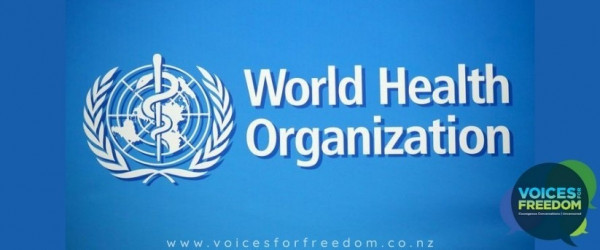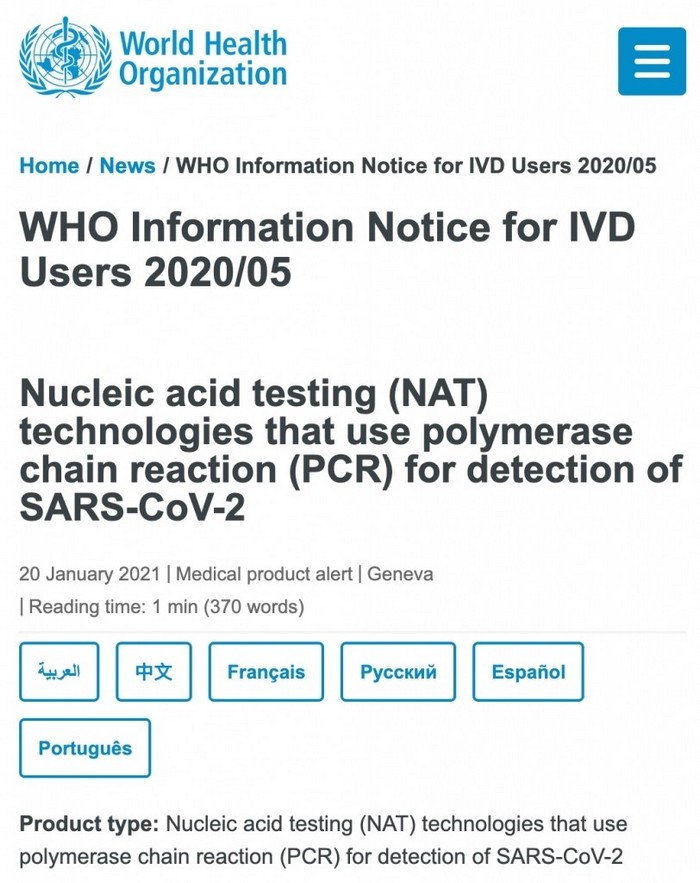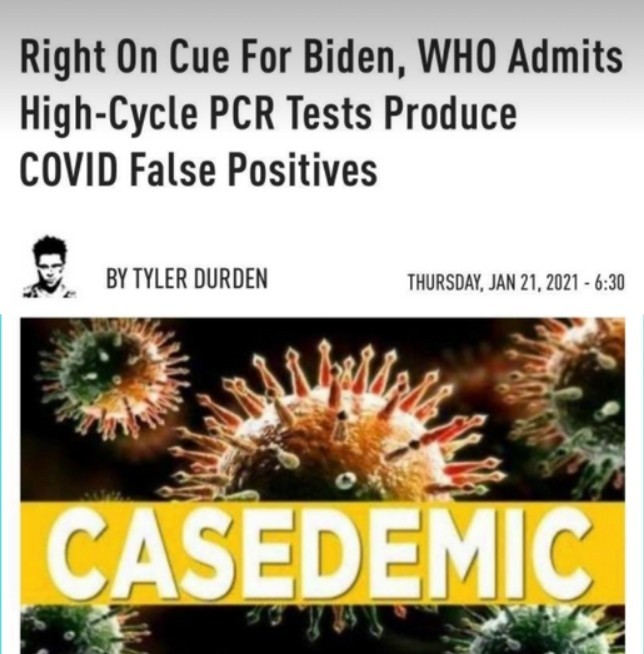
W.H.O Pulls A Swifty
W.H.O ISSUES UPDATE FOR USE OF NUCLEIC ACID TESTING (NAT) USING PCR – 21 Jan 2021
Hold onto your hats, peeps, we have a “We told you so” moment coming up!!

In a nutshell, the W.H.O have released new guidance for testing for COVID-19, which highlights the fact that PCR tests should be a diagnostic aid ALONGSIDE clinical symptoms.
They recommend repeat testing for weak positives and discuss how to determine whether manual adjustment of the PCR positivity threshold is needed (THAT is important).
They also outline how the false-positive rates increase when the disease rate falls in the community (which they’ve presumably known since 1994 when this article was published, but only decided to implement it now).
MEANING: We have had a year of using PCR as the ONLY diagnostic tool for COVID-19. You get a positive PCR, you are a case. As many scientists and medical professionals have pointed out, this practice WILL have resulted in many false-positive results and upped the case numbers globally (and resulting hype & hysteria). We SHOULD have been requiring clinical symptoms as a necessary component of a positive test from the beginning.
It is inevitable that ANY change to the testing and reporting criteria for a “case” at this stage will result in a drop in “cases”. So, BINGO, we have a reduction in cases alongside the introduction of the experimental vaccines and a change of US president. How convenient. Cue the fanfare and understand the public are being played.

Note: those who have studied history will know that this has happened before. Look up the timely changes in the testing criteria for polio if you are brave enough to challenge the popular narrative.
FROM THE W.H.O. UPDATE
“WHO guidance Diagnostic testing for SARS-CoV-2 states that careful interpretation of weak positive results is needed (1). The cycle threshold (Ct) needed to detect virus is inversely proportional to the patient’s viral load. Where test results do not correspond with the clinical presentation, a new specimen should be taken and retested using the same or different NAT technology.
WHO reminds IVD users that disease prevalence alters the predictive value of test results; as disease prevalence decreases, the risk of false positive increases (2). This means that the probability that a person who has a positive result (SARS-CoV-2 detected) is truly infected with SARS-CoV-2 decreases as prevalence decreases, irrespective of the claimed specificity.
Most PCR assays are indicated as an aid for diagnosis, therefore, health care providers must consider any result in combination with timing of sampling, specimen type, assay specifics, clinical observations, patient history, confirmed status of any contacts, and epidemiological information.” [1]
And from the 1994 BMJ article:
“If the prevalence of the disease is very low, the positive predictive value will not be close to 1 even if both the sensitivity and specificity are high. Thus in screening the general population it is inevitable that many people with positive test results will be false positives.”
Thanks for reading and sharing! Remember to sign up to our mailing list to keep up with the latest news.
If you value what we are up to at Voices and would like to support our ongoing work you can donate to us and support our nationwide public education campaigns (webinars, flyers, billboards...) and other initiatives to speak up and push back for your freedoms.




